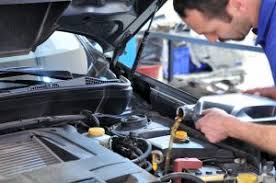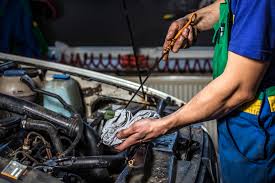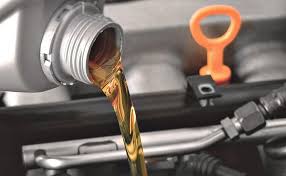How Do I Know If My Cambelt Needs Changing?
Does my cambelt need changing?
The cambelt is a rubber belt that controls the timing of your vehicle’s internal combustion engines. It performs a vital function by ensuring that the crankshaft and the camshaft rotate in synchronisation.
Unfortunately, like other vehicle components, your car’s cambelt will almost certainly need changing at some point. You can often tell when it needs a change, as you will notice your car performing unusually. In this article, we cover the main tell-tale signs that it’s time to get your cambelt replaced.
Noise
Sometimes, a cambelt will produce a loud noise when the car is running, this happens most often when the vehicle is first started and the engine is cold. The noise could be a squealing, hissing, grinding, rattling, chirping or rumbling kind of sound. Squealing is common for a loose belt, which can indicate wear and the need for replacement. If the belt is fairly new, yet is still making a noise, the driver should have the tension adjusted, but still have the belt visually checked for unusual wear.
Starting Issues
If there is an issue with the cambelt, your vehicle may not start at all. This is because without the belt, the camshaft will not rotate when the crankshaft turns. This can be diagnosed by watching the camshaft while turning the crankshaft. If the camshaft does not turn, the belt is broken.
Visual Check
Another way to check whether your cambelt needs replacing, is to take a look at the belt itself. If it is becoming worn, the belt will appear to look glazed or glossy on the underside. This means the rubber is getting hard and will not provide the flexibility the belt needs. Some signs are much more obvious, such as cracking or fraying. Belts with that kind of damage should be replaced immediately. A further way to check is to press a fingernail or the tip of a screwdriver gently onto the belt. If the pressure does not leave a mark, it means the rubber is becoming too stiff.
As the cambelt can be difficult to get to, a visual and physical check is best done by a professional.
Prevention
For obvious reasons, it’s recommended to carry out regular maintenance on your vehicle. Your mechanic will often notice wear to the cambelt when taking the car in for servicing. If the mechanic does mention replacing the timing belt, it’s best to follow his advice. Timing belt replacement is a whole lot better than timing belt repair. It is probably not a good idea to try to repair a timing belt unless it is a simple short-term belt to get you home. Replacing the cambelt will save you a lot of trouble and money in the future.

Checks To Keep Your Engine Fit and Functional
An engine is like the heart of a car. It needs to run smooth in order to keep your car moving. I can’t emphasize more on how important it is to keep the engine fit and functioning efficiently. Here are 10 engine maintenance tips that’ll help your engine run forever:
#1. Change engine oil at regular intervals
New engine oil being put in the vehicle
This is the least you can do. The engine oil keeps all moving parts well lubricated so that wear and tear is minimal. Also, it traps all the dust, dirt, and sediments, keeping them out of places they shouldn’t be. Check oil levels every month and top up if the level is low. Oil grade and change intervals are subject to the manufacturer’s recommendations. The oil filter is equally important as it filters all the junk from the oil and stops regulation back into the engine. This will ensure that you engine runs smooth and cool.
#2. Keep check on the cooling system
Coolant being poured in the vehicle
Even though we have come a long way in terms of efficiency of a car engine, a lot of energy is lost during combustion in the form of heat. Metals and alloys, which your car engine is made out of, are not very good friends with heat. Always ensure there is ample coolant in the tank as it is very important for heat dissipation. A 1:1 ratio of coolant and distilled water is ideal. Also, it’s a good thing to look at the engine temp gauge on a hot sunny day and shut your car down in case it’s close to overheating.
#3. Let it breathe
A used air filter taken out of the vehicle
Short of breath? Feeling tired? Your car’s engine needs oxygen as much as you do. A constricted air flow can cause the fuel to not burn completely, in turn increasing emissions and reducing mileage. Check the air filter and get it cleaned/ changed whenever you feel there is too much dirt and debris stuck to it. Your engine needs to breathe properly to function well and keep going.
#4. Look for leaks
Oil leaking out of a car
When you pull out of the driveway, stop and look at the parking spot for any fluids on the ground. If the fuel is leaking, you should visit the nearest mechanic and get it checked. You can also check under the hood to see or smell something leaking. Engine oil and antifreeze are fluids you should look out for when checking for leaks.
#5. Don’t keep going on reserve fuel
Fuel meter showing reserve fuel level
Petrol contains sediments which settle at the bottom of your tank. Years of running and there will be definitely a layer of crap which shouldn’t reach the engine. Running on low fuel pulls this junk into the fuel pump which could cause a lot of wear. Instead of just praying it doesn’t reach the engine, top up your tank and save yourself repair/ replacement cost of the fuel filter and pump.

How to Tell If You Have a Faulty ECU
The ECU, or engine control unit, is a major component of your car’s onboard computer. It’s used to regulate many systems and subsystems in your car’s engine, drive train and other major components. There are many symptoms that can be associated with a faulty ECU. Here are some ways to tell if yours is damaged or faulty.
The Check Engine Light Is On
If you vehicle’s check engine light remains on constantly, and never goes off, there’s a good chance that your vehicle has a faulty engine control unit. There are numerous reasons why a car’s check engine light will remain on. The most common reason is a problem with the ECU. If you notice that your check engine light is always on, take your in vehicle in for service and request that they check the engine control unit.
The Car Won’t Start
If your vehicle fails to start for no apparent reason, this is also a good indicator that there may be a problem with the ECU. If you check the car battery, starter and other common electrical components, and the vehicle still does not start, a faulty engine control unit should be the next logical thing to consider.
Other Common Symptoms
Many other symptoms can be associated with a faulty ECU. For example, poor performance or unexplained drops in fuel economy or efficiency are often related to onboard car computer problems, or faulty ECU issues.
A damaged ECU can cause problems when shifting gears in an automatic transmission, or cause sudden jerking or stopping that’s similar to transmission problems. If you experience jerking or stopping, you regularly maintain your transmission properly, and the vehicle has adequate levels of transmission fluid, then a faulty ECU should be suspect.

Signs Your Oil Needs Changing
Oil changes are a simple service appointment, but when performed regularly, they can help to extend your engine’s longevity and enhance its overall performance. So why do drivers delay or choose not to change their oil?Unfortunately, most people rely on mileage rather than oil change warning signs to let them know when it’s time to schedule a service appointment. As a result, their vehicles end up suffering from an overdue oil change longer than they should.Oil Change | Philadelphia, PAAt Montgomeryville Nissan near Philadelphia, PA, we want to help your car run like new for as long as possible. So we’ve created your guide to the top five signs that you need an oil change to make sure that you get your vehicle the care it deserves when it needs it most.
1. Dark and Dirty Oil
Clean oil is an amber color. After a while, the fluid darkens and gets dirty from all of the particles it collects from the engine.You won’t know exactly when its color starts to turn, so we recommend checking the condition of your oil every month. To do this, remove the dipstick from your engine, wipe it off, and put it back in. When you remove it again, if you can see the stick through the oil, the fluid is fine.
2. Louder Engine Noise and Knocking
Clean oil provides a thin barrier between engine parts that protects against metal-on-metal contact and keeps your engine quiet on your travels. However, when the fluid starts to break down, it doesn’t lubricate the parts as well so you’ll hear louder engine noise.If you ignore the increased engine sounds, you’ll start to hear knocking, rumbling, and even roaring to let you know that your vehicle is in dire need of an oil change.
3. Oil Change or Check Engine Light
An illuminated oil change light on your vehicle’s dashboard indicates that there’s too little oil in the system. So once you see this light, check your oil level with the dipstick and if it’s insufficient, change your oil as soon as possible. In more serious instances, your check engine light will turn on to let you know your vehicle is at high risk of engine damage due to the lack of fluid or damaged parts.
4. Exhaust Smoke
It’s common to see a translucent vapor coming out your tailpipe when the weather gets colder. But if you notice smoke being emitted, check your oil because there could be an oil leak in your engine.Smoke can also indicate faulty parts in your engine. So if you see there’s enough oil in your vehicle, have a professional perform diagnostics to pinpoint the problem and repair it immediately.
5. Oil Smell Inside the Cabin
Getting a whiff of oil inside the cabin is a huge warning sign. Generally, the odor is strong and means there’s a leak. However, this scent can also be mixed with the smell of gas or exhaust fumes. This indicates that your vehicle is overheating and oil is burning into the exhaust area.An overheating engine can cause serious damage to your car and even ignite a fire. So once you smell oil inside your car, get an oil change right away.
How often should you check your car oil?
Checking and topping up your engine oil is one of the most important car maintenance tasks. But it’s also one of the simplest to do by yourself.
In your annual car service, the mechanic will drain the old oil, replace the oil filter and re-fill with new oil. But you can check your oil and top it up yourself in minutes.
We recommend that you don’t wait until your yearly service. Check your oil yourself every few weeks and especially before long journeys, using our essential car maintenance tips.
If you’ve bought a car and the service history’s not clear, it’ll be hard to know when the oil was last changed. In that case, it’s better to be safe than sorry, so ask your garage to do an oil and filter change.
